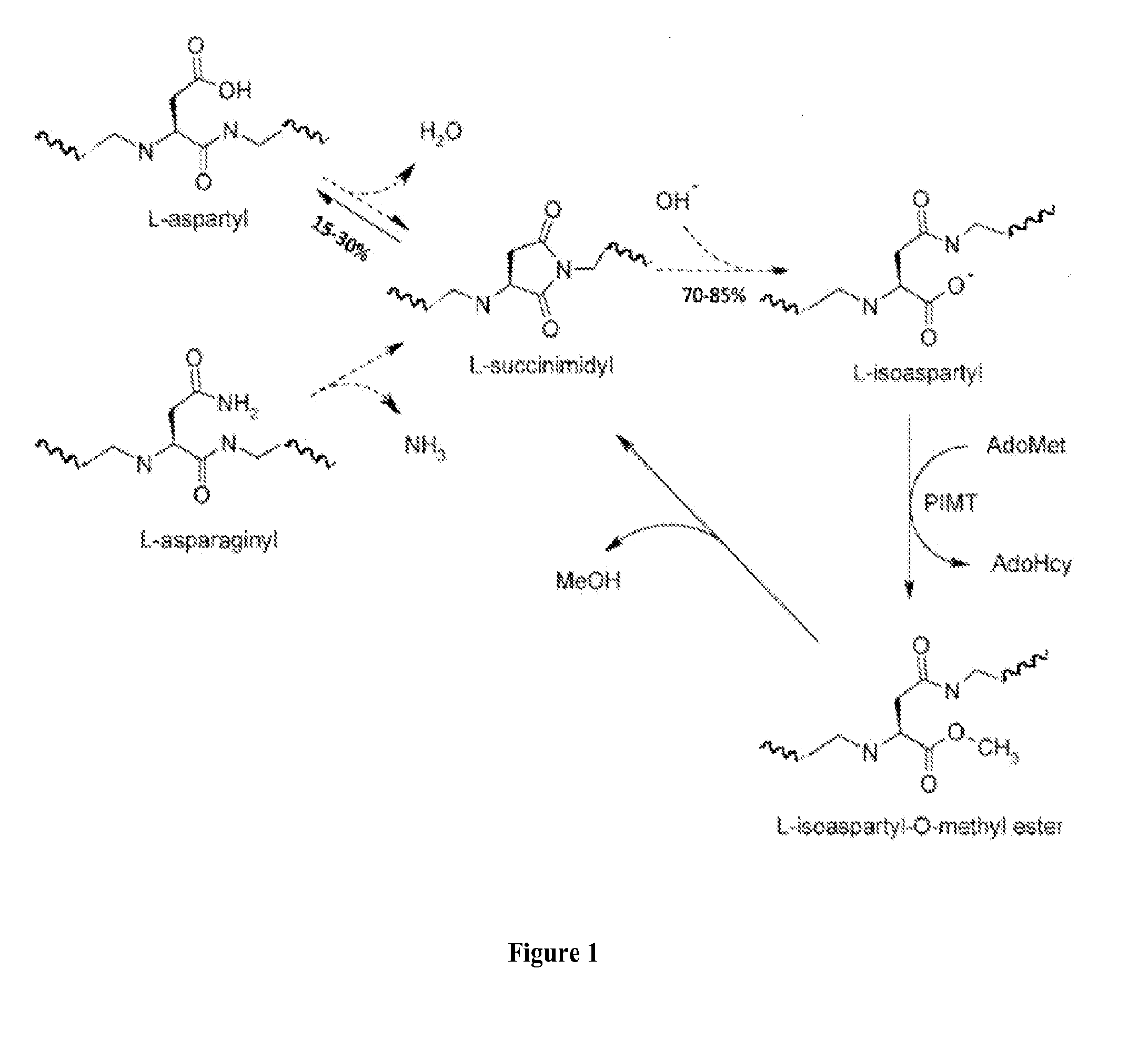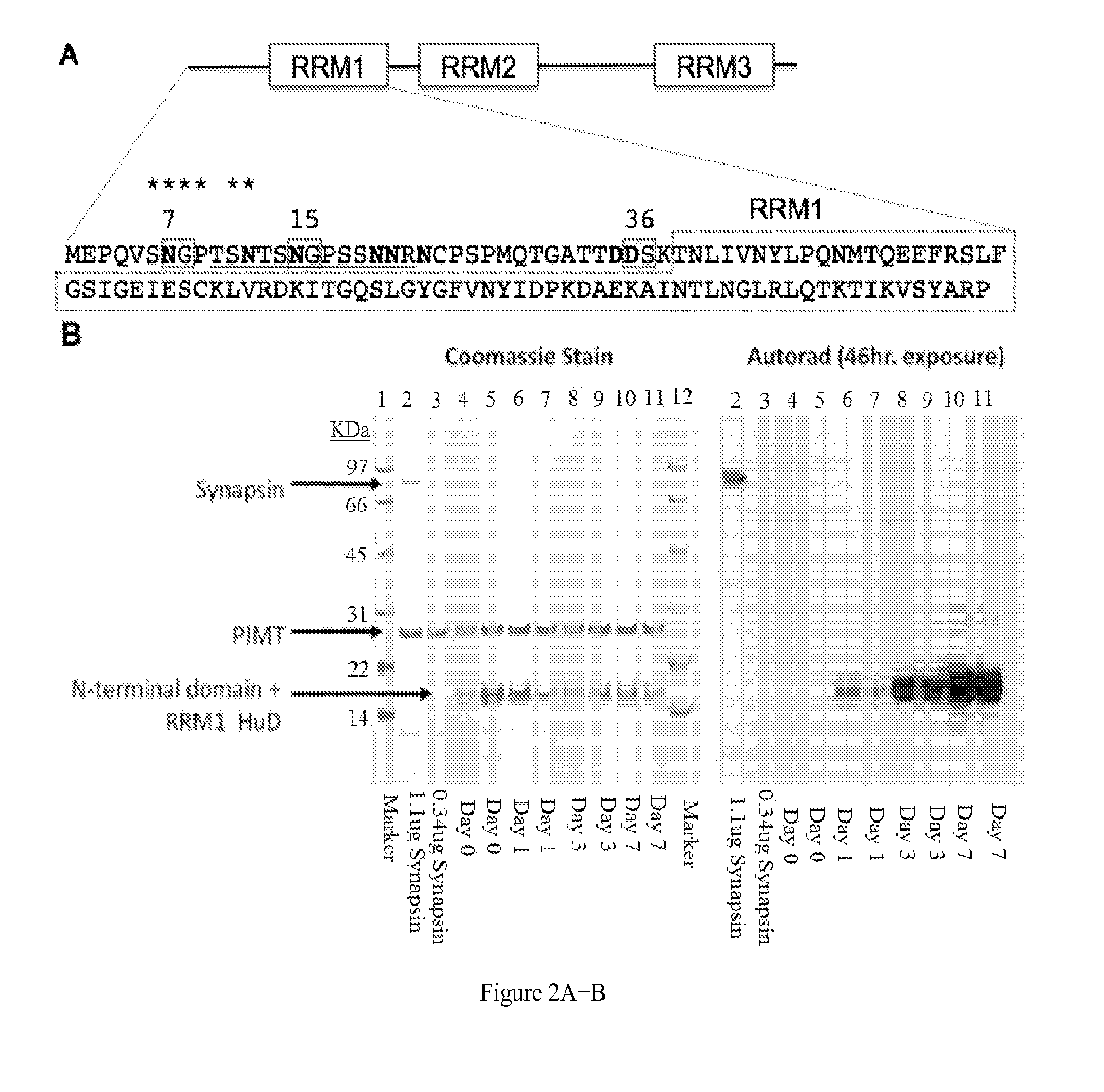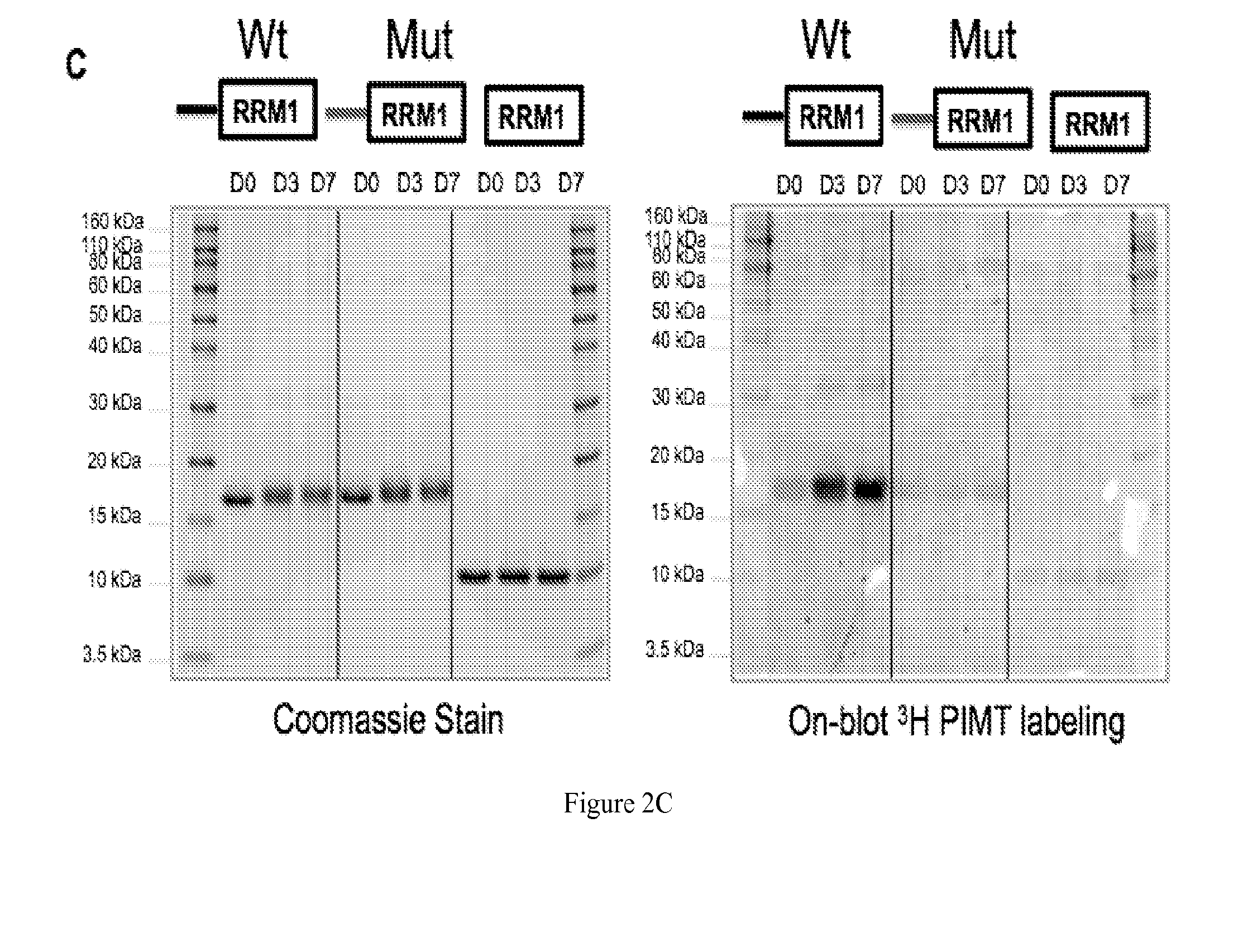Methods and Compositions for Detecting, Imaging, and Treating Small Cell Lung Cancer Utilizing Post-Translationally Modified Residues and Higher Molecular Weight Antigenic Complexes in Proteins
a technology of protein antigen complex and protein, applied in the field of small cell lung cancer detection, imaging and treatment, can solve the problems of men and women, difficult to detect lung cancer early, and rapid return of cancer
- Summary
- Abstract
- Description
- Claims
- Application Information
AI Technical Summary
Benefits of technology
Problems solved by technology
Method used
Image
Examples
Embodiment Construction
Definitions and Abbreviations
[0032]AdoMet=S-adenosyl-L-methionine
[0033]PEM / SN=paraneoplastic encephalomyelitis / sensory neuronopathy
[0034]PIMT=protein-L-isoaspartyl (D-aspartate) O-methyltransferase
[0035]PNS=paraneoplastic syndrome
[0036]RRM=RNA recognition motif
[0037]SCLC=small-cell lung cancer.
[0038]As used herein, the term “isoaspartylated proteins” refer to proteins that contain isoaspartate residues. Proteins containing asparagine (N) or aspartate (D) residues may undergo isoaspartylation in physiological conditions as illustrated in FIG. 1. Such proteins have been found in the present invention to possess antigenic properties, and to be present in the tumors of SCLC patients.
[0039]As used herein, the term “antigenic peptide fragment” refers to peptide fragments of isoaspartylated proteins which encompass at least one of the isoaspartate residues of the parent proteins. Such peptide fragments may retain the antigenic properties of the parent proteins and are, therefore, referred ...
PUM
| Property | Measurement | Unit |
|---|---|---|
| Molecular weight | aaaaa | aaaaa |
| Affinity | aaaaa | aaaaa |
| Antigenicity | aaaaa | aaaaa |
Abstract
Description
Claims
Application Information
 Login to View More
Login to View More - Generate Ideas
- Intellectual Property
- Life Sciences
- Materials
- Tech Scout
- Unparalleled Data Quality
- Higher Quality Content
- 60% Fewer Hallucinations
Browse by: Latest US Patents, China's latest patents, Technical Efficacy Thesaurus, Application Domain, Technology Topic, Popular Technical Reports.
© 2025 PatSnap. All rights reserved.Legal|Privacy policy|Modern Slavery Act Transparency Statement|Sitemap|About US| Contact US: help@patsnap.com



